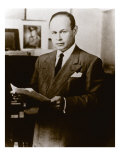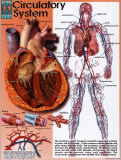|
|
Charles Drew, Physician & Researcher: Educational Posters, Books, Links for Learning
for the arts and social studies classrooms and home schoolers.
|
history > black history > CHARLES DREW < famous men < health
|
|
Charles Drew, Head of Surgery at Howard University and Chief of Surgery at Freedman's Hospital, was a medical researcher in the field of blood transfusions.
Dr. Drew's techniques of separating and storing blood components, such as blood plasma, were applied to developing large-scale blood banks early in World War II. Dr. Drew also protested the racial segregation of donated blood since blood can be safely transfused from one person to another regardless of ethnicity, if the blood types are compatible.
Charles Drew was also a noted athlete, earning All American honors as a halfback at Amherst College in 1925.
|
|
• CHARLES DREW POSTERS
Celebrate Black History
|
|
|
|
|
|
|
|
|
|
|

Charles Drew
poster no longer available
|
Great Black Americans -
Charles Drew
Poster Text: Charles Drew was a true pioneer. He was the first black person ever to be awarded a Doctor of Science in Medicine degree. He was one of the first black surgeons in America. And he set up the nation's first “blood bank” program. His efforts saved countless lives, and he inspired thousands of young black men and women to enter the field of medicine.
Charles Drew was born into a well-to-do family in Washington, D.D. in 1904. Charles grew up as the oldest of five children, and this helped make him very responsible. His parents taught their children that they should serve the community in some way. Washington was home to many black families, and it was one city where a talented person, on matter what color, could achieve success. And Charles was very talented – both in athletics and in academics. In high school and in college, he starred on the football, track and basketball teams. When a football injury put him in the hospital, Charles watched the doctors with fascination. And after graduating from college, he entered medical school in Canada.
While working as a surgeon at a Montreal hospital, Charles Drew studied the problem of storing blood for transfusions. at that time, blood had to be used right away, or it “spoiled” and became useless. By adding certain chemicals to blood, Dr. Drew found that he could store the blood for about a week. But in 1940, he began to think about using blood plasma instead of whole blood for transfusions. Blood plasma is a clear liquid that contains many of the substances necessary for survival. But it does not contain red blood cells – so it does not “spoil,” and it can be given to any person, no matter what their blood type. Dr. Drew's experiments with plasma were successful. He quickly organized a program to send blood plasma to Europe to help wounded soldiers in World War Two. This effort saved thousand of lives, and made Charles Drew an international hero.
Dr. Drew won numerous awards for his work, and he helped train an entire generation of black medical students. But tragically, just as his career was reaching a peak, he was killed in a car accident. Today he is remembered as a man who dedicated his entire life to teaching and helping others.
• more Great Black Americans posters
|
|
|
|
|
• more Black History posters
• more health care practitioners posters
|
|
|
“There must always be the continuing struggle to make the increasing knowledge of the world bear fruit in increased understanding and the production of human happiness.”
Charles Drew
b. 6-3-1904; Washington, DC
d. 4-1-1950
• BOOKS about Charles Drew
Charles Drew (Black Americans of Achievement series) by Robyn Mahone-Lonesome
- Ages 9 -12
Dr. Charles Drew, Medical Pioneer (Journey to Freedom series) by Susan Whitehurst
- Ages 9 - 12
One Blood: The Death and Resurrection of Charles R. Drew by Spencie Love - traces both the life of the famous black surgeon and blood plasma pioneer Dr. Charles Drew and the well-known legend about his death. On April 1, 1950, Drew died after an auto accident in rural North Carolina. Within hours, rumors spread that the man who had helped created the first American Red Cross blood bank had bled to death because a whites-only hospital refused to treat him. Though Drew was in fact treated in the emergency room of a small, segregated hospital, Spencie Love shows that in a generic sense, the legend of his death is true: throughout the era of segregation, African Americans were refused medical help because of their race. By preserving their own stories, she says, they have proven the enduring value of oral history.
Dr. Charles Drew: Blood Bank Innovator by Anne E. Schraff
LINKS FOR LEARNING :
CHARLES DREW
|
|
|
previous page | top
|
|
I have searched the web for visual, text, and manipulative curriculum support materials - teaching posters, art prints, maps, charts, calendars, books and educational toys featuring famous people, places and events - to help teachers optimize their valuable time and budget.
Browsing the subject areas at NetPosterWorks.com is a learning experience where educators can plan context rich environments while comparing prices, special discounts, framing options and shipping from educational resources.
Thank you for starting your search for inspirational, motivational, and educational posters and learning materials at NetPosterWorks.com. If you need help please contact us.
|
|
|








